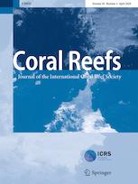Profile
Our main goal, in collaboration with Professor Rob Dunbar’s team at Stanford University, is to contribute to the understanding of the conservation value of the Indian Ocean Region’s reefs. I am particularly interested in how coral populations are connected within this region through their larvae dispersal and how this influences their recovery from major disturbances such as the recent 2015 & 2016 global mass coral bleaching event. Additionally, my team and I are also aiming to form a picture of plankton bio-geography patterns around the atolls.
I have always been fascinated by the diversity of life on coral reefs, much of which remains unidentified. I am investigating this question to help explain recovery patterns and to potentially identify networks of coral connectivity which may be hotspots for more intensive protection in the future. I also look to increase our understanding of the true diversity of life which reefs in the Chagos Archipelago support and increase our understanding of what drives these community composition patterns.
We intend to widen this study out to other areas in the Indian ocean in the future to investigate the idea of this region being a stepping-stone across the Indian ocean for coral dispersal.
I believe that by better understanding how reefs are connected and how they function we can enhance our ability to protect these valuable and beautiful ecosystems and mitigate the effects of climate change. Although this can only be achieved alongside a reduction in global climate emissions.
Biography
My Project
Other interests
Tropical coral reefs are the most diverse marine ecosystem and sadly also one of the most threatened. In addition to my research in the Indian Ocean Region, I am involved in a coral barcoding pilot project at London Zoo to identify the corals in the aquarium collection. I also have teaching responsibilities for Biological Sciences undergraduates at St Peter’s College, University of Oxford.
Moreover, I am a committee member for Reef Conservation UK organizing an annual symposium for reef researchers and conservationists. In 2016 we hosted the European Coral Reef Symposium (ECRS) at University of Oxford.
My Publications

Ctenella chagius (Green Status Assessment)
Wilson, B., Jones, R., Head, C., Obura, D.O., Pearce-Kelly, P., Hoffmann, M. (2025). Ctenella chagius (Green Status assessment). The IUCN Red List of Threatened Species 2025: e.T133701A13370120251.

Environmental Change and Connectivity Drive Coral Reef Fish Abundance in the Western Indian Ocean
Warmuth, L.M., Kelly, S., Samoilys, M.A., Popova, E., Head, C.E.I., Bonsall, M.B. (2024). Environmental change and connectivity drive coral reef fish abundance in the Western Indian Ocean. ICES Journal of Marine Science

Integration of Population Genetics with Oceanographic Models Reveals Strong Connectivity Among Coral Reefs Across Seychelles
Burt, A., Vogt-Vincent, N., Johnson, H., Sendell-Price, A., Kelly, S., Clegg, S.M., Head, C.E.I., Bunbury, N., Fleischer-Dogley, F., Jeremie, M., Khan, N., Baxter, R., Gendron, G., Mason-Parker, C., Turnbull, L.A. (2024). Integration of population genetics with oceanographic models reveals strong connectivity among coral reefs across Seychelles. Scientific Reports.

Environmental DNA Captures Diurnal Fluctuations of Surface Eukaryotes on a Tropical Coral Reef
Dowell, R., Dunn, N., Head, C., Yesson, C., Williams, J., Ransome, E. (2024). Environmental DNA captures diurnal fluctuations of surface eukaryotes on a tropical coral reef. Environmental DNA.

Remote Reef Cryptobenthic Diversity; Integrating Autonomous Reef Monitoring Structures (ARMS) and In Situ Environmental Parameters
Steyaert, M., Lindhart, M., Khrizman, A., Dunbar, R.B., Bonsall, M., Mucciarone, D., Ransome, E., Santodomingo, N., Winslade, P., Head, C.E.I. (2022). Remote reef cryptobenthic diversity; integrating Autonomous Reef Monitoring Structures (ARMS) and in situ environmental parameters. Frontiers in Marine Science.







